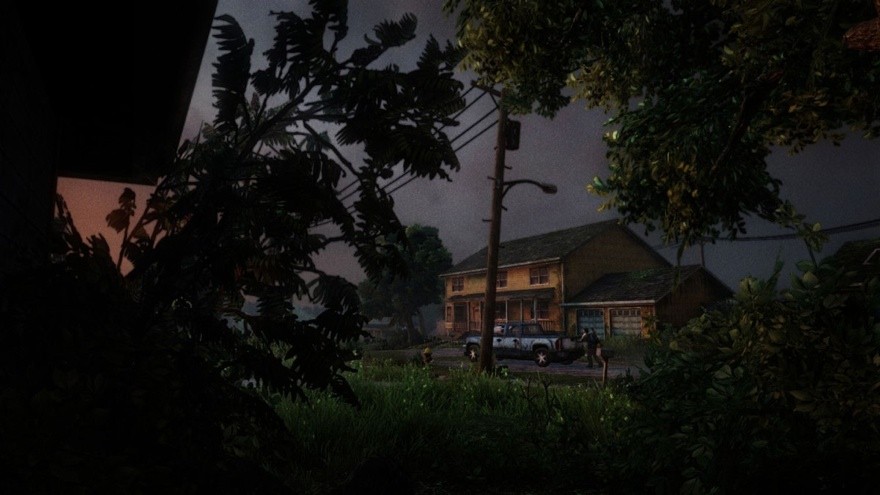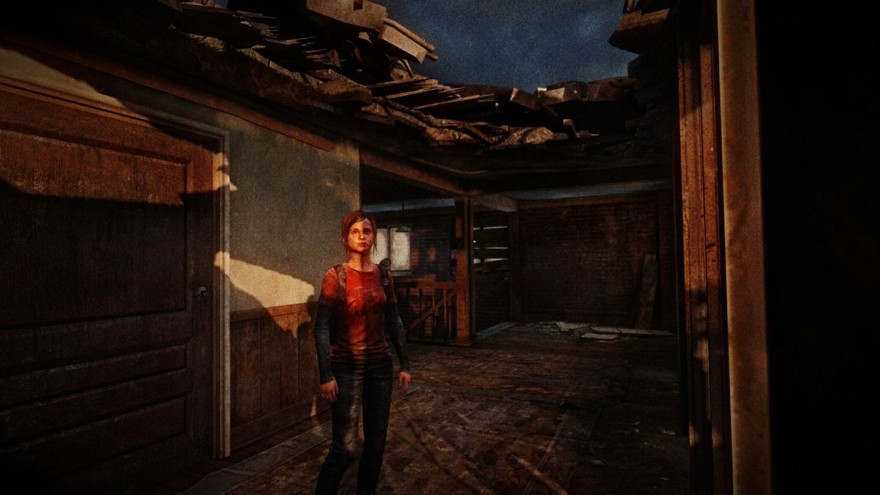You’re not going to find deep-sea fish if you’re staring between your legs while knee deep in the neighbour’s wading pool. And you’re probably not going to get gripping photographs of dust-covered residents of a post-apocalyptic Boston if you’re sending your photographer into a videogame.
That’s the sort of misunderstanding that typically comes out of traditional media outlets attempting to import their practices and modes of production into a medium that it does not particularly lend itself to. But TIME Magazine tried to do just that. They sent Ashley Gilbertson, a war photographer who has done extensive work in Iraq, on assignment to take pictures of characters in The Last of Us with the game’s new Photo Mode while running willy-nilly from the infected. But it doesn’t work. The pictures that Gilbertson presents in his online TIME article don’t seem to be affected by the same gravitas that his other pictures carry. Taking pictures of soldiers in a war zone just isn’t the same as taking pictures of characters in a videogame.

One can appreciate where Gilbertson and TIME are coming from: The Last of Us presents a mise en scène that echoes the geopolitical rumblings of our own very real world. Viral outbreaks of endemic proportions and the effects and waging of war are themes that have been worked through over and over again in various media, and not just in videogames. It would seem that bringing Gilbertson into the fray would make for an interesting match, given his haunting and insightful coverage of the American war effort in Iraq from 2003–08 in the photo essay “Whiskey Tango Foxtrot.” But In Gilbertson’s own words, “None of the game’s characters show distress, and that to me was bizarre—it’s a post apocalyptic scenario, with a few remaining humans fighting for the survival of their race!“ He’s having trouble with making his images—trouble he’s never had before—and he puts it down to the limits of the videogame: the emotive limitation of polygons that make up the game’s characters, and having to play the role of a “perpetrator of extreme, and highly graphic, violence.” The problem doesn’t emerge from the technical or ethical fidelity of The Last of Us’s as a videogame, but from a gross misunderstanding of digital media by traditional media.
This is not to say that photography, or any other sort of visual journalism has no place in videogames or vice-versa. In 2009, Upian and Arte France produced “Prison Valley,” an interactive documentary that won the 1st prize for the World Press Photo’s Interactive Production category in 2011; more recently, Al Jazeera produced “Pirate Fishing” (2014), which invites the viewer to take on the role of an investigator tasked to find an illegal fishing trawler. Both are web documentaries that have game-like elements woven into their narratives to pull the viewer in, asking them to piece the story together themselves. One might point out that these are barely videogames, and are unrelated to videogame coverage like Gilbertson’s photo-essay. But the point is this: that the relationship between traditional (journalistic and otherwise) media and videogames is not one where each can simply plug-and-play into the other. Building an experience that makes sense when dealing with meshing “real” and videogame worlds needs to be carefully done.

Gilbertson’s photographs of The Last of Us seem out of place because the boundaries between the “real” and videogame worlds have been misinterpreted. To understand why his photographs are problematic in this specific context, we would have to indulge in a little bit of poetry. Of what makes a photograph, Susan Sontag writes in On Photography:
All photographs are memento mori. To take a photograph is to participate in another person’s (or thing’s) mortality, vulnerability, mutability. Precisely by slicing out this moment and freezing it, all photographs testify to time’s relentless melt.

We shouldn’t take Sontag literally, but what she says kind of makes sense. The emotional sledgehammer that hides behind Gilbertson’s pictures of Iraq is held by the shadow of perishability that looms behind every photographic subject framed by his camera. It’s not a question of if the photographed subject or object will die, but when will it die. The soldiers in “Whiskey Tango Foxtrot” will no longer be there when he comes back to the same spot later, nor will the physical place stay the same. Dust moves, and you will never step in the same river twice — the “real-world” is one that is constantly decaying and re-growing itself. This is unlike a videogame, where — in Gilbertson’s words — you can “freeze time” and re-play the same scenario again and again. Which is why when displaced from a “real-world” environment and placed in a videogame, Gilbertson finds it difficult to make his images. He laments:
I shot through a dirty window at one point trying to emulate the refugee-in-bus-window-at-border-crossing image, but the subject, my virtual daughter, didn’t have the required expression of distress.
It is not so much the lack of “required expression of distress” that plagues this photographer, but the much larger problem of attempting to photograph in a medium that does not lend itself to photographic capture. The digitally generated world that he attempts to capture here has no half-life, no expiry date unless you consider the decay of the hardware that runs it.
So, no. You can’t photograph a game the way Gilbertson would photograph an actual war zone, and perhaps it’s time we stopped trying to pretend that we can. Instead of treating videogames as a medium merely mimics the way our world works, we should be trying to reach a new understanding of videogames. Alexander R. Galloway, videogames scholar, proposes that “[i]f photographs are images, and films are moving images, then videogames are actions.” He adds:
Without action, games remain only in the pages of an abstract rule book. Without the active participation of players and machines, videogames exist only as static computer code. Video games come into being when the machine is powered up and the software is executed; they exist when enacted.
In short, videogames need to be played in order for them to work. The value of a videogame does not lie only in its aesthetic or in its code, but a coming to life through the act of play. It is this element of play that both TIME and Gilbertson miss out on. It is also why GIFs, YouTube, and Twitch.tv are the platforms of choice for showing off how awesome (or terrible) videogames are: they show us not only how the games look like (as a photograph or screenshot would), but also how a videogame can affect us. An attempt to bring journalism, or any other form of traditional media, into videogames needs to understand this, and not try to simply squeeze an “expression of distress” out of pixels.
Images via TIME Magazine
